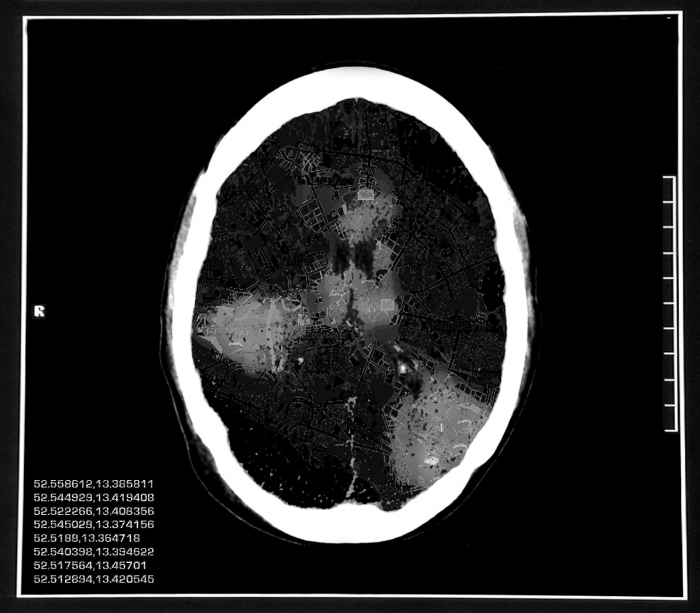Mapping the reSource network
Mapping the reSource network
Form May to the end of August 2013 John Wild worked with Tatiana Bazzichelli, at transmediale, on a project to map the reSource network of independent technology based art and hacker spaces in the city of Berlin. John Wild is an artist and anti-disciplinary researcher currently studying for a PhD, evaluating the Impact of ubiquitous computing on the production of social and physical space, within the Media and Arts Technology Program at Queen Mary, University of London.
The mapping project rapidly developed a Schizoid split between a practical Cartesian rationalism and a Psychogeographic abstraction that was resolved by the development of two distinct approaches to mapping the network.
1) Cartesian mapping :: The first approach was to develop a functional Android Mobile Phone application with the aimed of increasing the visibility of the independent art/hacker spaces within the city. The App provides an overview of the city with a clear and navigable map of the location of each space. To achieve this, GPS data and map tiles where sourced from the OpenStreetMap initiative. OpenStreetMap is dedicated to encouraging the growth, development and distribution of free geospatial data and to providing geospatial data for anyone to use and share. The map was overlaid with location markers of the resource network venues. Taping on a space marker reveals more information about the venue and a link to its web presence. See the downloadin instructions here.
Network Noise Drift from John Wild on Vimeo.
2) Network Noise Drift :: A ‘network is a plurality of (organic and artificial) beings, of humans and machines who perform common actions thanks to procedures that make possible their interconnection and interoperation’ [1] The second approach to mapping the network was to explore and make audible the usually invisible non-human aspects of the networks technological infrastructure through field recordings of the machine processes that enable the social network. A GSM sniffer, electromagnetic induction coils, similar to those used in guitar pickups, and a broad spectrum RF receiver where used within each space to record the electromagnetic imprints created by the spaces networked devices. WLAN, Cell phone signals, Bluetooth devices, DECT cordless phone base stations, and the internal processors of laptops were recorded through the practice of electromagnetic audio drifting. A technique of allowing yourself to be guided by the invisible intensities, textures, and ambiances of a spaces specific electromagnetic geography.
These raw field recordings where then composed into a sonic abstractions of each space. Using an android mobile phone application and openStreetMaps these compositions where geo-spatially sited at specific locations on a map of Berlin and only accessible by physically going to the locations within the City.
This sonic abstraction of the reSource network was presented by John Wild at reSource006, held at Kunstraum Kreuzberg/Bethanien, as a performativity walk. John guided the walkers through the streets of Berlin passing through the varied ambiences and nodes of the sonified and abstracted map of the reSource network of technology based art and hacker spaces.
More information about John Wild’s work can be found at http://johnwild.info
[1] Franco Berardi, 2011, ‘Swarm & Disruption’ quoted in Tatiana Bazzichelli, Networked Disruption. Rethinking oppositions in Art, Hacktivism and the Business of Social Networking, Aarhus University, Digital Aesthetics Research Center, Aarhus, 2013.
John Wild is currently a PhD student within the Media and Arts Technology Programme at QMUL, London. John Wild studied sculpture at the Royal College of Art (MA) and received a 1st class BA honours degree from Chelsea College of Art and Design. John has participated in numerous exhibitions, festivals and events and his work has been exhibited at Late at the Tate (Tate Britain), the Barbican London, the Sonic Arts Expo, Arnolfini (Bristol) and the Royal College of Art. He received an ARTSADMIN early career artist’s bursary for his live art work and collaborated with Tim Goldie to organise the Abject Bloc Resonance 104.4 FM radio show

